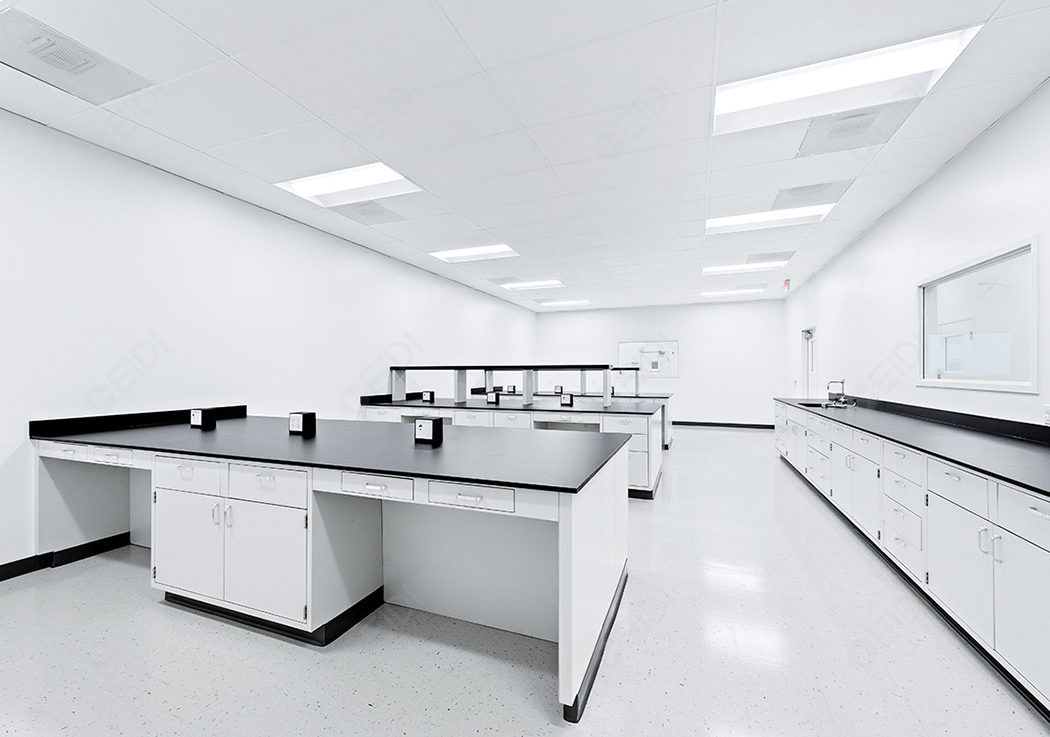Welcome to the official website of Xidi laboratory, the laboratory design and decoration recognize Xidi!
|
|
Home >> News >> Technology
文章出处:Technology|阅读量:848|发表时间:2020-07-27
Regarding the planning and layout of the environmental testing laboratory, it mainly includes six aspects, namely: graphic design, single-unit structure and function design, water supply and drainage design, electric control system design, gas distribution system design, and gas exhaust system design. Below, I will first introduce the graphic design and the single-unit structure and function design.
I. Graphic design
The graphic design of environmental testing laboratories should start from two aspects: safety is guaranteed and laboratory functions are classified.
1. Security is guaranteed
For the graphic design of environmental testing laboratories, the designer must first consider safety. After all, the laboratory is prone to accidents such as pollution, explosion, and toxic gas leakage. Therefore, the graphic design should try to keep the laboratory's ventilation and escape channels unobstructed.
There must be a distance of 40cm between the sky platform and the instrument platform in the laboratory from the wall, and the aisle of the experiment platform must lead to the corridor to facilitate the evacuation of personnel after an accident. In addition, the clear width of the laboratory corridor should be 2.5m-3.5m, the width of the double door of the general laboratory should be 1.1m-1.5m, and the width of the single door should be 0.8m-0.9m.
2. Classification of laboratory functions
Generally speaking, environmental testing laboratories can be divided into five categories, namely: general chemical laboratories, physical monitoring laboratories, instrument analysis laboratories, clean laboratories, and auxiliary laboratories.
General chemistry laboratory is used for capacity analysis and redox experiments; physical monitoring laboratory is used for physical monitoring and analysis experiments; instrument analysis laboratory is used for instrument analysis; clean laboratory is used for controlling various parameters in indoor air to meet the requirements The cleanliness grade; auxiliary laboratory is used for experimental assistance.
II. Single unit structure and function design
The single structure and function design of the environmental testing laboratory should start from three aspects, namely: experimental bench, instrument bench, and functional cabinet.
1. Test bench
According to the functional design, the experimental platform can be divided into three types, namely: physics experimental platform, chemical experimental platform, and biological experimental platform.
2. Instrument table
The instrument table is used in the instrument analysis laboratory, and its load-bearing capacity is preferably above 500Kg.
3. Function cabinet
There are two types of functional cabinets: full wood and steel wood. Its main function is service and storage, and its main function involves issues such as safety and environmental protection.
The above introduces the graphic design and single structure function design in the layout of the environmental testing laboratory. As for the design of water supply and drainage, the design of the electric control system, the design of the gas distribution system, and the design of the gas exhaust system, they will be introduced in the next article.